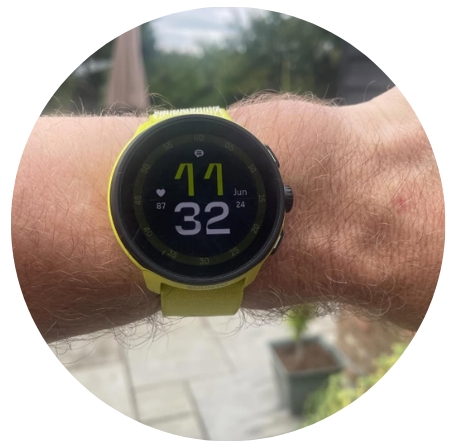Running Experience Survey 2025
9: Running technology choices
For many people, technology has become entwined with running, just as it has with our wider lives. Many of us collect data on our running performance and fitness using a smartwatch, and may share it online through dedicated social media platforms such as Strava or tracking platforms like Garmin Connect.
In this section we will explore some of the survey data around the ways runners engage with technology, and look at how this varies between different social groups and types of runner.

9.1 Three types of tech use
Relative importance
The Running Experience Survey collected data on three main types of tech engagement in runners:
- Health tracking via a smart watch
- Collecting and sharing performance data online
- Engaging with running content on the internet
Runners were asked to rate each of these in terms of its significance to their running lives. The results are shown in this chart, which suggests that around 45% of runners engage with each of these forms of tech to a moderate degree.
High engagement – over and above this 45% share of moderate using runners – is most common for health tracking followed by performance sharing. Only 9% of runners rate discussing and reading about running online as very important.
Overall tech engagement
Each runner was given a tech engagement score by combining their responses across all of the above three forms, with zero points for each ‘not important’ response, one point for ‘somewhat important’ and two points for ‘very important’.
This chart shows the proportion of runners obtaining each score, reflecting distribution of teach engagement levels in the survey sample.
Around 8% of runners show no engagement at all. Most cluster between 2 and 4 points, suggesting a minimum of some engagement in two out of three forms, or strong engagement with at least one.
9.2 Demographic differences
Gender
Focusing on the proportions of runners who rated each form of tech ‘very important’ to them, we can see there are some differences between male and female runners.
However, only the difference in health tracking importance is statistically significant. Female runners rate this kind of tech somewhat more important to them than do males.
Age
Tech engagement varies with age too. This chart shows the proportion of respondents rating each form of tech ‘very important’ in different age groups.
Reading/discussing running online remains relatively stable, but sharing data online drops consistently through the age groups.
Health tracking appears to have a low level of importance among the youngest runners, but quicky rises in prominence before dropping away for the oldest age groups.
9.3 Tech preferences for different types of runner
Tech enthusiasm by motivational profile
Different motivational orientations to running are associated with different levels of engagement with tech, as shown in the chart below.
Community Enthusiasts rate highest on all forms, followed by Competitive Achievers and Experiential Runners, with Pragmatic Joggers least engaged across the board.
You can find the definitions of the four runner profiles here.
Individual motivations most strongly linked to each tech enthusiasm
The following charts show the percentage of respondents rating each form of tech ‘very important’ for different levels of three motivations.
The motivations have been chosen because they show the strongest relationship with the tech in question.
So, the best predictor of ‘health tracking’ enthusiasm is a concern with ‘managing my weight’ (blue chart).
Runners’ reported levels of the motivation ‘setting and achieving goals’ appear the best predictor of enthusiasm for both ‘sharing running data online’ (yellow chart) and ‘reading/discussing running online’ (green chart).
Motivations' relationships with overall tech engagement
This chart shows the difference between overall tech engagement scores (combining all three forms of tech to create a score from 0-6) for the lowest and highest levels of each motivation.
This helps us see which motivations are most strongly connected to tech engagement.
For instance, runners with the highest level of ‘setting and achieving goals’ motivation score almost 1.6 points higher (out of 6) than those who are not motivated in this way.
High levels of all of the motivations are linked to higher tech use, with one exception: levels of ‘engagement with nature’ motivation have no significant relationship with interest in tech.
Motivational profiles and tech engagement versus abstention
Finally, this chart shows the proportion of members of each motivational group (outlined here) who scored 4-6 for overall tech engagement (very high tech engagement, in green), and the proportion who scored 0-1 (very low tech engagement, in red).
There is a clear divide between high tech usage by Competitive Achievers and Community Enthusiasts, and much lower usage (and higher rates of tech abstention) by Pragmatic Joggers and Experiential Runners.
You can click on the coloured key at the top of the chart to examine either level of tech use separately.
Running Experience Survey
© Neil Baxter 2025
Please always cite using: Baxter, N. (2025). Running Experience Survey. Running Studies. https://runningstudies.co.uk/running-experience-survey